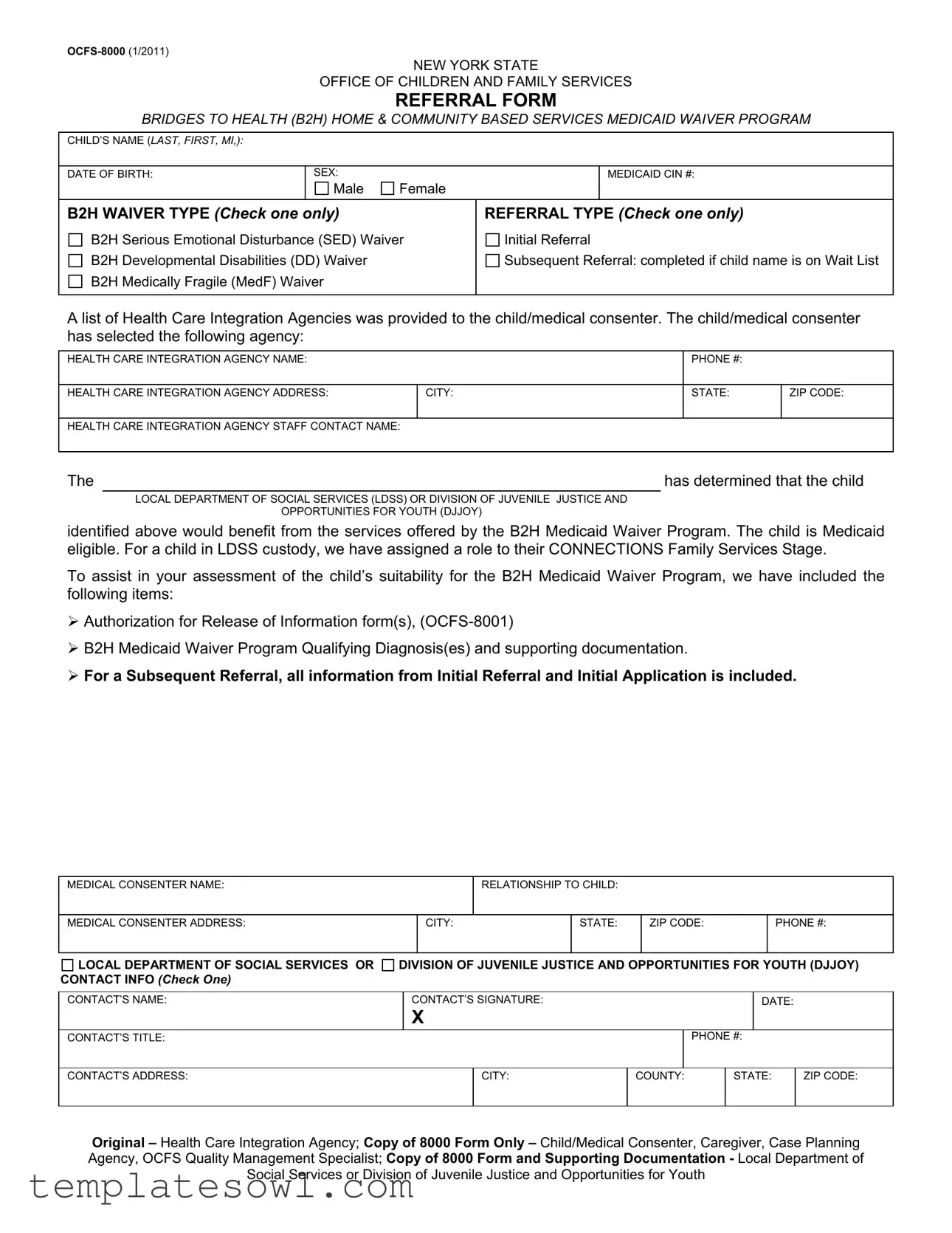Filling out the OCFS-8000 form is a crucial step for accessing the Bridges to Health Medicaid Waiver Program in New York. However, mistakes can happen, leading to delays or complications in the process. One common error involves improperly entering the child’s name. It's essential to ensure the name is filled out as it appears on legal documents, including last name, first name, and middle initial. Inconsistencies in this information can raise questions about the child's identity, causing unnecessary hold-ups.
Another frequent mistake is failing to check the correct B2H Waiver type. The form offers three options: Serious Emotional Disturbance, Developmental Disabilities, and Medically Fragile. Selecting the wrong waiver type may hinder the appropriate services from being assigned, so it's crucial to understand which waiver aligns with the child's needs. Review this section carefully before making a selection.
Inadequate contact information for the Health Care Integration Agency is another pitfall that individuals can easily fall into. It's vital to provide comprehensive details, including the agency name, phone number, and address. Missing or incorrect information may prevent the integration agency from following up and could stall the entire referral process. Be meticulous when entering this data to avoid potential issues later.
Additionally, many applicants overlook the requirement to ensure that the child is indeed Medicaid eligible. This critical verification step is essential before proceeding with the referral. Omitting proof of Medicaid eligibility could lead to outright rejection from the program. Double-checking this information can save time and frustration.
Omitting required documentation is yet another mistake people make. The form specifies that certain supporting documents, such as the Authorization for Release of Information and qualifying diagnoses, must accompany the application. Failure to include these elements might result in delays or even a complete denial of services. Always ensure that all necessary paperwork is secured and submitted with the OCFS-8000 form.
Another area of confusion often arises concerning the involvement of the Local Department of Social Services or Division of Juvenile Justice and Opportunities for Youth. Not providing accurate contact information or signatures can introduce further complications. This step is vital for establishing proper communication and support throughout the application process, so make sure to fill it out correctly.
One also must not neglect to specify whether the referral is initial or subsequent. This distinction informs the reviewing authorities about the case's context, ensuring that they can process the application appropriately. Mislabeling this could lead to misunderstandings regarding the child's status.
Neglecting to include the medical consenter’s details is another mistake that can impede the process. The medical consenter's name, relationship to the child, and contact information are all pivotal for maintaining a clear line of communication. Missing this information could create barriers to evaluating the child's suitability for the program.
Finally, a common oversight is failing to keep copies of all documents submitted. Applicants are encouraged to retain their own copies of the OCFS-8000 form and any supporting materials. This practice not only helps track progress but also establishes a point of reference in case issues arise later. Maintaining organized records can be invaluable throughout the entire application process.

